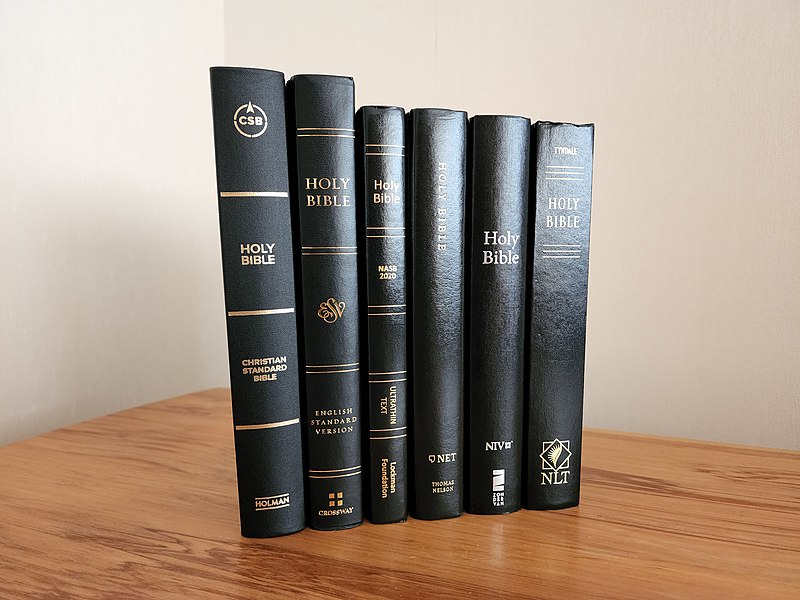When deciding on what Bible to buy, an understanding of Bible translations is important. What does Bible Translation mean? The Bible Translation (sometimes referred to as Bible version) is the result of the process of converting or translating Bible texts from its original language into another language.
As the Bible was originally written in Hebrew, Aramaic and Greek languages, there was a need for Bible translators to convert them to other languages like English, Yoruba, Hausa, Igbo and others that you and I understand.
The several translations available today can be broadly classified into 4 groups based on the translation approach.
Formal Equivalence Translations
They employ an approach that emphasizes the literal or word-for-word rendering of the original text. The goal of this type of translation is to provide readers with a text that reflects the original language as accurately as possible. Examples of formal equivalence translations are King James Version, English Standard version, Revised Standard Version.
Pros:
1. Accuracy: They try to convey the exact meaning of the original text in the target language by maintaining the original syntax, idioms and arrangement of words.
2. Good for scholarly and academic purposes because they prioritize accuracy.
3. Respect for the original text by ensuring the closest possible reproduction
Cons:
1. Can be difficult to read due to the syntax or lack of context
2. They may miss the intended meaning or cultural context because they focus so heavily on accuracy
Dynamic Equivalence Translations
They take an approach that aims to convey the meaning and the intent in a way that is natural and understandable in the target language. It is also known as a thought-for-thought translation. These translations have a more conversational language than the formal equivalence translations. Examples of dynamic equivalence translations are the New Living Translation, Contemporary English Version
Pros:
1. They are easier to read and understand
2. They are more accessible to a wider audience. You don’t need to be familiar with the original language or cultural context to understand.
3. They are more relatable due to their contemporary language
Cons:
1. They may be more influenced by cultural assumptions of the translators which can lead to inaccuracies in the translation
2. Not very suitable for in-depth study
3. They may not convey the original meaning of the text
Paraphrase Translations
Unlike formal equivalence translations, they seek to convey the meaning of the original Bible text in a more contemporary and understandable way by the use of a simplified colloquial language. Examples are
Pros:
1. They often use simpler sentences and language to convey the original text in a more understandable way
2. They are more accessible to a wider audience
3. The translator may interpret and present the text in a unique way that brings new insights and perspectives to the text
Cons:
1. They may be more subjective and may not convey the meaning of the original text.
2. They may sacrifice accuracy over readability
3. Not suitable for in-depth study
Interlinear Translations
These are translations that present the original text in its original language (Greek/Aramaic/Hebrew) alongside a literal/word-for-word English translation. Examples are Interlinear Bible, Greek-English Interlinear New Testament, Hebrew-English Interlinear New Testament.
Pros:
1. Provides a word-for-word translation that helps its readers to compare and contrast between the original language and its translations
2. Can be helpful for language learners
3. Good for scholarly use
Cons:
1. May be difficult to read for those not familiar with the original language
2. Time consuming and may be stressful to read
Choosing a Bible Translation
There are some factors to consider when choosing a Bible translation such as:
Reading level: Like we explained above, some translations are easier to read than others. Some versions like the Contemporary English Version are really easy to read and may be better for children and teenagers.
Translation approach: Some translations favour a word-for-word translation while others favour a thought-for-thought approach or paraphrasing. Consider which translation approach aligns with your personal beliefs and preferences.
Purpose of reading the Bible: The version you choose may depend on your purpose for reading the Bible. You may prefer a more accurate version like the King James Version for study or a more readable version like the Good News Translation for personal devotion. For example, the Revised Standard Version is the approved Bible translation in Nigerian secondary schools.
Church denomination: Different church denominations in Nigeria may have a particular preference for a translation. You may want to consider buying the translation used in your church
Accessibility: Is the translation you want available in a format that is easy to use? Is it available in print, digital and audio forms? For example, some Christians prefer to prefer translations available in audio format because they find listening to the Bible helpful.
Availability and cost: Depending on your location, getting some translations may be difficult. Some translations may not be affordable for you. Some of the popular Bible translations in Nigeria are the King James Version, New King James Version, Good News Version, Revised Standard Version, English Standard Version, Contemporary English Version, The Message and others.
Personal preferences: Ultimately, the choice of choosing a translation may boil down to your own personal preferences. You can try out different translations and then pick the one you understand properly or find engaging.
Common Uses for Different Types of Translations
1. Formal equivalence translations are often used for study and scholarly purposes as they follow an approach that preserves the original language
2. Dynamic equivalence translations are often used for devotional reading or public worship, as they prioritize easy understanding and readability
3. Paraphrase translations are used for personal reflection as they may offer new insights to a Bible text.
In conclusion, when choosing a Bible translation, it is important to consider your preferences as well as the common uses of the different translations. While there are pros and cons to each type of translation, we recommend having at least one formal equivalence translation in your collection such as the King James Version because of its accuracy and word-for-word approach.
Additionally, it can be beneficial to also have other versions such as a dynamic equivalence translation like the Good News Translation or a paraphrase like The Message for a broader understanding of the text and to aid personal devotion. Ultimately, the most important thing is to regularly read and study the Bible in a translation you can understand.
We hope you found this guide useful. If you did, kindly share this post with a friend. What is your favourite Bible translation? Tell us in the comments box below!
You can order for quality Bibles in your preferred translation from our store at an affordable price.




